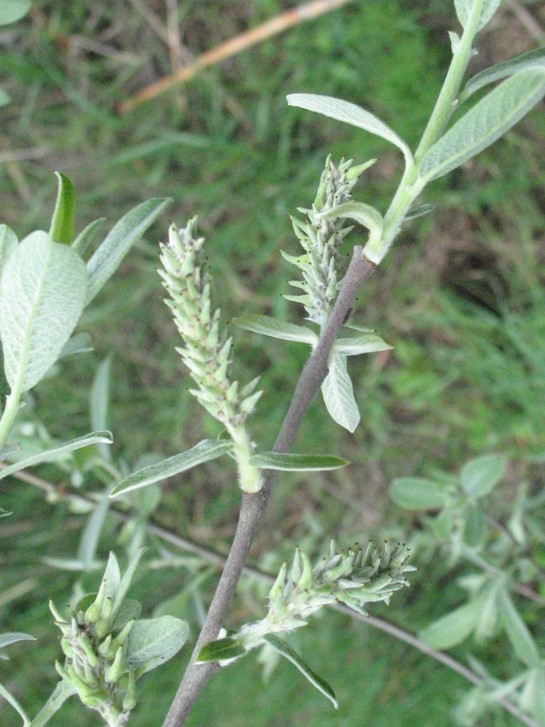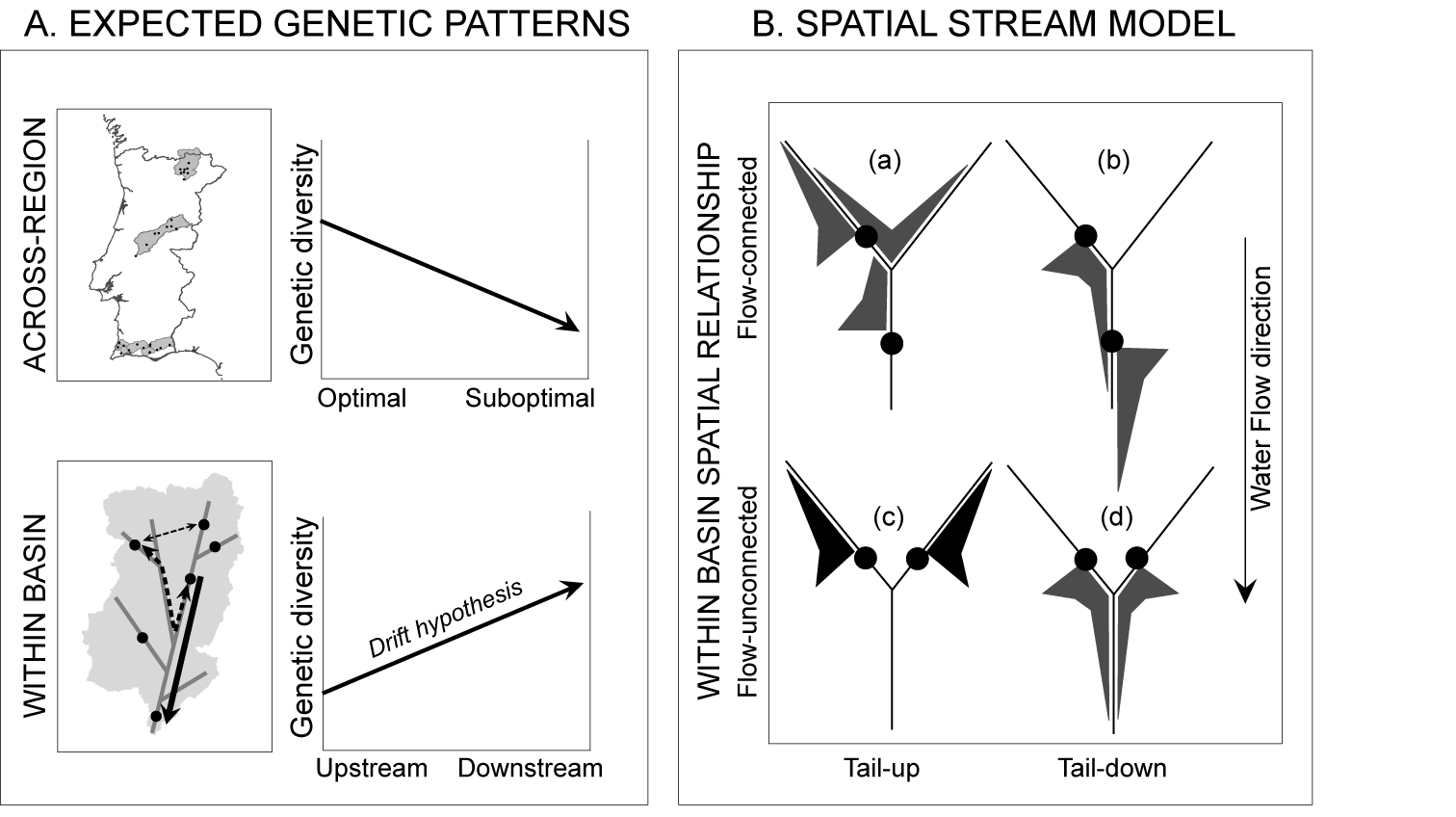Hydrological connectivity is determinant to manage genetic diversity of riparian forests

The conservation of genetic diversity in riparian forests is largely driven by the connectivity between populations along the hydrographic networks.
The study, led by a research team from Forest Research Centre, Instituto Superior de Agronomia, has been published 1/05/2019, in the Journal Scientific Reports, Nature group.
This study addressed for the first time the spatial patterns of genetic diversity in riparian forests dominated by the Iberian endemic species Salix salviifolia Brot. (family Salicaceae), referred to in Annex II of the Habitats Directive. Quantifying the genetic diversity of riparian species is essential if we are to predict their chances of surviving global change, maintaining their role as key species, regulating river ecological processes and providing ecosystem services to society. However, the approaches used to model the responses of riparian forests do not fully fit in with the dendritic structures that form the river networks, hampering adequate management of these threatened ecosystems.
The application of an innovative spatial analysis methodology (spatial stream-network models, which were applied for the first time to riparian vegetation), allowed the integration of the architecture, topology and directionality of hydrographic networks with ecological factors to quantify the effect of multiple factors on the quantity and distribution of genetic diversity. Hydrological factors explained the distribution of genetic diversity among connected populations mainly through hydrochory processes, on an intermediate spatial scale, and through anemophyllous and entomophyllous pollination among more distant populations. Higher thermicity and summer drought were related to inbreeding and decreased genetic diversity, suggesting that increased aridity may disrupt hydrological connectivity among riparian populations.
The study was led by Patricia María Rodríguez González, researcher from Forest Research Centre, who worked in collaboration with researchers from the Institute of Integrative Biology (University of Liverpool) and CIBIO-InBIO, CITAB (University of Trás-os-Montes and Alto Douro), INIAV I.P., ICAAM (University of Évora) and cE3c (University of Lisbon).
The field work focused on spontaneous Salix salviifolia formations distributed by several rivers belonging to hydrographic basins of the North, Centre and South of Portugal, covering the latitudinal variation of the species. The study was supported by the EDP Biodiversity Fund, the Interreg-SUDOE Programme and the Foundation for Science and Technology. Patricia María Rodríguez González is funded by the FCT Researcher Programme.

Link with direct access to the article: https://rdcu.be/bzLwo



